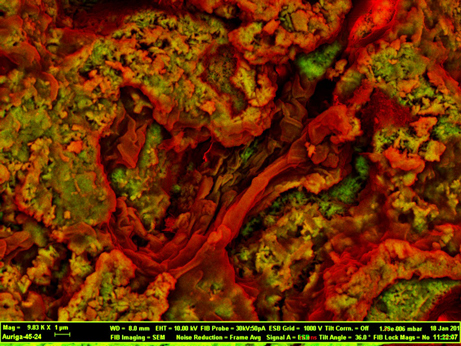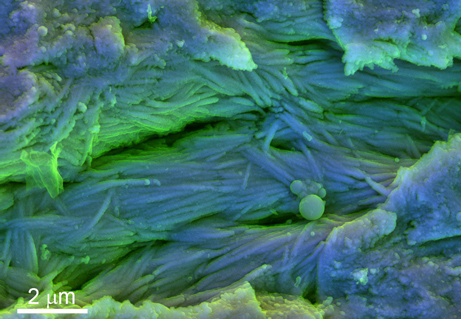Evidence of Dinosaur Blood and Soft Tissue in Fossil Bones
In rare and exceptional cases, preserved organic remains have been identified in the fossil record of vertebrates, even dinosaurs. However, this area of research, the identification of soft tissues in the fossilised bones of dinosaurs, is highly controversial. Researchers from Imperial College London examined samples from eight dinosaur bones that were not renowned for their exceptional preservation.
Fibres and Cellular Structures
The techniques used involved nano-analysis including FIB (focused ion beam) technology. In one sample, the team observed structures that were consistent with the fibrous structure of collagen. In another fossil specimen, that of an indeterminate Theropod claw, erthrocyte (red blood cell) structures were observed. Mass spectrometry analysis of these microscopic remains provided a chemical signature similar to that of emu blood.
Potential Evidence for the Remains of Dinosaur Blood Preserved in Fossil Bone
Picture credit: Laurent Mekul
Dinosaur Fossils
All the fossils were from either the Dinosaur Provincial Park Formation or the Lance Formation (North America), the specimens are believed to date from the Late Cretaceous and are estimated to be around 75 million years old.
Potential Collagen Structures Preserved in Dinosaur Bones
Picture credit: Laurent Mekul
Identifying Preserved Biological Structures
Using advanced and extremely sophisticated material characterisation approaches, scientists may have identified preserved biological structures in these samples. If these experiments can be repeated, then it might suggest that organic remains preserved in the fossil record of long extinct creatures may be more common than previously thought.
Further information on this research can be found here: Fibres and Cellular Structures Indicate Organic Remains Preserved in Dinosaur Fossils.
Teaching Guidelines
This article can be used to help explain permineralisation of materials (geology) and link into an exploration of genetics and inheritance as part of the KS3 science curriculum. Ask the students to consider the implications of the discovery of preserved organic remains in the fossil record. Look at Siberian Woolly Mammoths and the merits of attempts to bring back long extinct species via genetic manipulation and cloning.
Everything Dinosaur supplies a range of educational, prehistoric themed items including replicas of dinosaur fossils: Everything Dinosaur.



